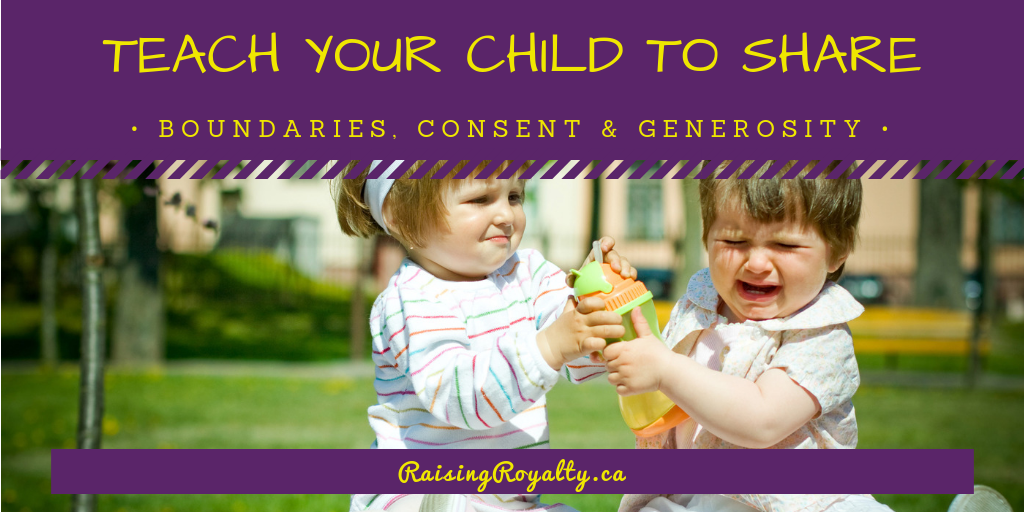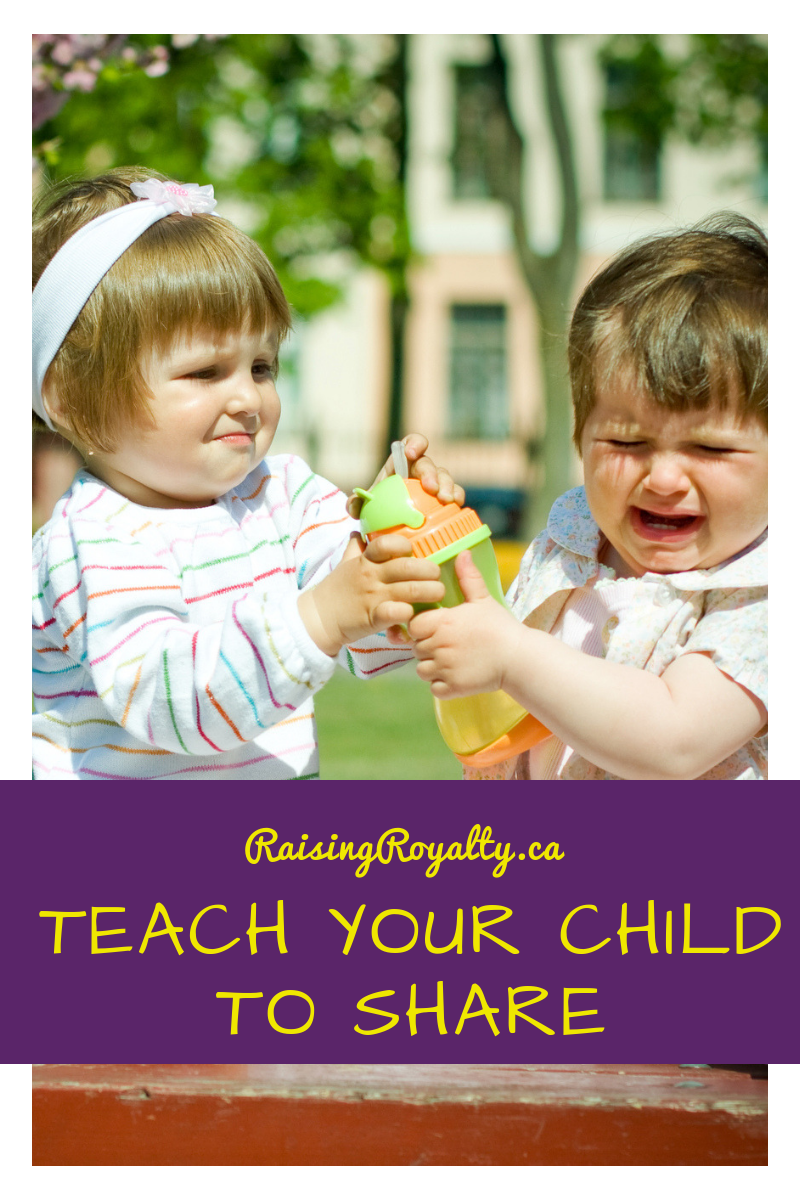
“In Kindergarten, we share everything!”
The Robert Munsch book, “We Share Everything”, talks about teaching two little kindergarten students how to share. By the end of the book, the teacher is stunned at how well the children learned to share — they share their clothes! While you want to teach your child to share, obviously we don’t quite want them to share that much.
Sharing seems like a basic concept of good manners and getting along. But in today’s climate of teaching consent and boundaries, how do you teach your child to share appropriately?
Teach your child to share, along with other life lessons.
It isn’t quite as simple as just teaching them to share their toys. We want to raise healthy human beings that know when and how to share, and when they can and should say no. We want to protect them at the same time that we want our kids to be generous. It’s a balancing act, and it’s more than just teaching our kids to share.
First, kids share when they know they are protected and aren’t forced.
Forcing a child to “share” isn’t teaching them how or when to share. It’s teaching them that their right to say no isn’t going to be respected, when someone else wants their stuff and the authorities say they have to give it.
Force is not the message I want my kids to hear.
I want my kids to know first and most importantly that they can say “No” anytime, without qualification. And if that means that some other little kid is disappointed because they can’t play with my daughter’s toy truck, so be it. My daughter’s right to say no is more important than another child’s desire to play with a certain toy.

Second, give your kids a choice, and protect their choice. Consistently.
Consent matters.
Teaching sharing means teaching consent. We need to teach our kids about consent. And sharing and consent go hand-in-hand. After all, that’s what sharing really is: consenting to someone else being able to play with or use something of ours.
When we give our kids a choice to share, we’re teaching them that they can choose generosity. They can choose to make someone else happy. And that there’s a reward for those that freely choose to share.
We’re also teaching them that they can choose to protect themselves and their things. And that if they choose to keep something to themselves, there’s nothing wrong with that. When you teach your child to share, and you give them that choice, you’re teaching them that other people’s feelings aren’t their responsibility. And they don’t have to make themselves miserable just to make someone else happy.
Those are pretty important concepts. And it starts at the toddler age!
Third, teach your kids the difference between “communal” or “public” property and “private” property.
No one has to share anything that is private and theirs.
But we all share public property.
There’s a difference between the grass in your backyard and the grass at the park, right? The grass in your backyard is private property, and if you want to throw trash all over it, that’s your prerogative. You’re the one who has to clean it up later. But the grass at the park is public property, and we all pay for someone to clean up your trash at the park. It affects everyone, not just you.
When you teach your kids the difference between the two, you teach your child to share appropriately. You teach them that there are times when you share because it isn’t yours in the first place!
We share the road, we share the sidewalk, we share the swings and the beach. And we share the burden, as adults, of paying for and protecting all those things. Sharing the responsibility of caring for those things is balanced by sharing the joy and privilege of using those things.
Sometimes even adults forget.

Lastly, model it with your own things, and your own life.
Protect your things and invite them to share your stuff, and share with you. When you show them what sharing looks like, you set an important example.
Start by making sure there’s a difference between “mom’s stuff” and “kids’ stuff”. Model respect, by respecting their things. Knock before going into their room and expect them to do the same. Don’t just throw their things around, but handle their toys and books gently.
As you treat their things with respect, they’ll learn to treat their own things with respect. And as you expect them to treat your things with respect, they’ll learn about boundaries and trust.
After all, sharing is about trust. It’s about knowing that you can share generously, because you know, like and trust the person you’re sharing with. That’s where it starts.
Sharing happens when there’s security first.
And once a child is secure, they can live generously, and share with strangers. Because sharing isn’t just about things – toys and books and clothes — but about lives. And when you teach your child to share, appropriately, with boundaries and consent, even if it’s “just” a toy, you’re teaching them how to share their lives with others.
And when they learn to share, they learn how to live generously. That’s a choice that will change the world.
Do you think sharing is an important value?


Lots of good ideas here. You are so right that adults forget some of this. I like what you said about sharing the responsibility of caring for our shared public property.
Aww thanks! Yes — so many people don’t realize that we are all responsible for caring for our shared public property, and well.. you can see the results just by looking at the litter beside any road. It starts when our kids are young!